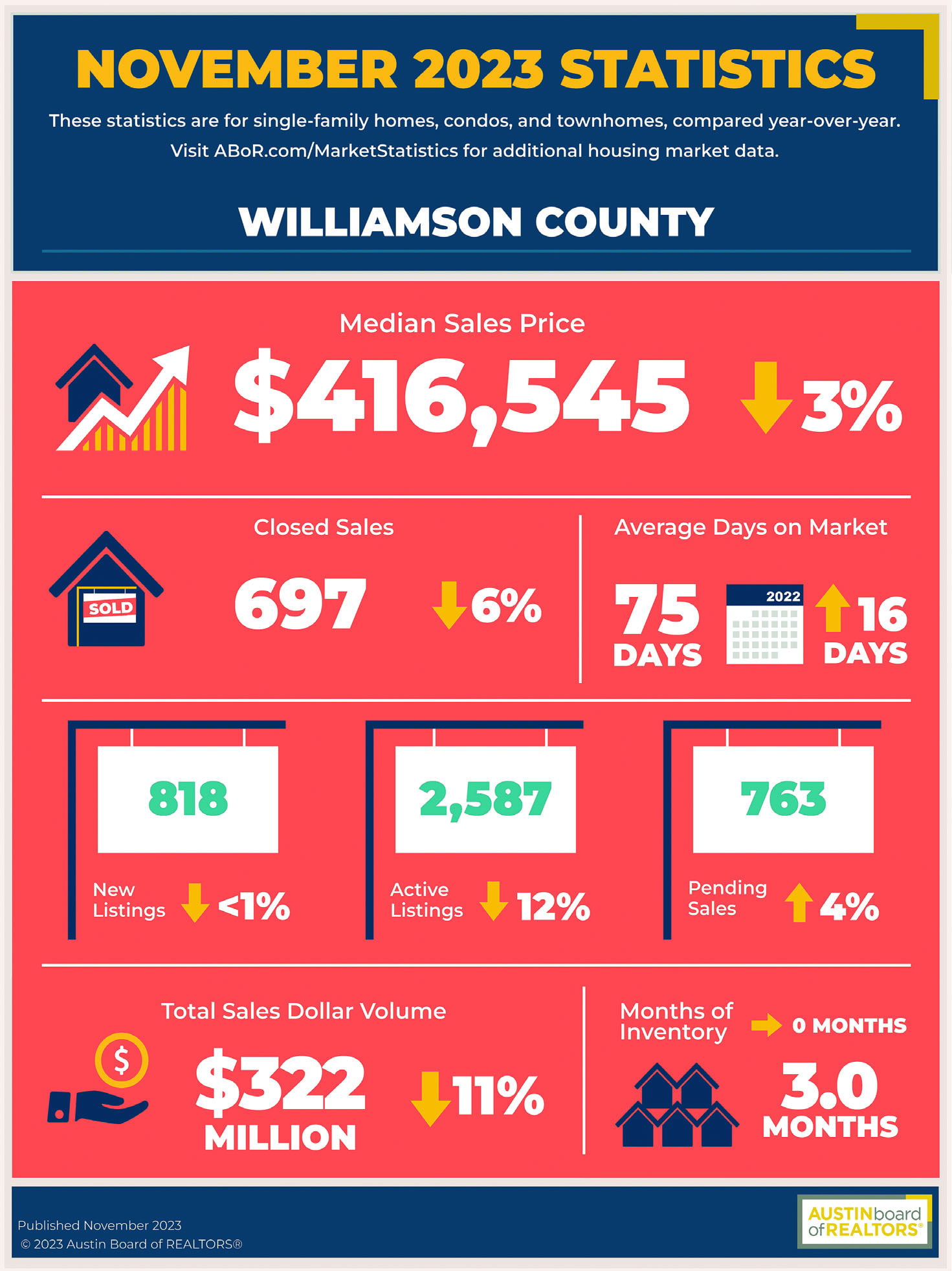BY TRAVIS E. POLING Special to the Press
While high interest rates have cooled the sale of houses in Williamson County, economic factors, area job growth and an anticipated influx of new residents are likely to reverse that trend next year, experts say.
For the five-county Austin-Round Rock Metropolitan Statistical Area, or MSA, the median home sales price on 2,065 houses in November fell 8.4% from the same period last year to $424,450, according to an analysis of Multiple Listing Service data by the Austin Board of Realtors.
Williamson County residential sales were down 6.4% to 697 and the median price dipped 3.1% to $416,545.
In the 76574 ZIP code that includes Taylor, the median home sales price was down 2.5% to $306,000 on eight sales in November.
“The past few years were not normal with low interest rates and the housing boom,” said Taylor Drolette of Sprout Realty. “It had to pull back. It just had too. You had just crazy deals going on before.”
Drolette is based in Austin, but grew up in Hutto, and has been active in selling houses in East Williamson County for six years.
Just two years ago, competition for houses was so fierce buyers were making offers on houses that weren’t on the market or sweetening bids with more cash up front and even letting the sellers stay in the house for several months after the sale closed.
The average time for a house to stay on the market in the MSA is now 75 days compared to 18 days in November 2022, giving buyers a chance to choose a house that meets more of their criteria instead of just settling for what’s available.
In the Taylor area, the average time on the market for houses sold this November was 31 days, nearly unchanged from a year earlier.
Higher mortgage rates are contributing to the decline in home prices and an increase in active listings as homes remain on the market for longer, said Clare Losey, housing economist for the Austin Board of Realtors.
“A rise in mortgage rates reduces buyers’ purchasing power, so the moderation in home prices helped to offset some of the decline in affordability,” Losey said. “However, rates peaked in late October and early November, signaling a rise in buyers’ purchasing power moving into 2024.”
The average interest rate on 30-yearfixed mortgages finally dipped below 7% earlier this week.
The Federal Reserve also left the prime lending rate – a benchmark that sets the interest banks charge each other to borrow money – unchanged in its last meeting of the year, while hinting of interest rate reductions next year as inflation finally cools off.
Average home lending rates across the country were about 7.5% in November., more than double what they were at the beginning of 2022 before inflation and a series of interest-rate hikes by the Fed to cool it down somewhat stabilized the heated housing market.
That means a house in Taylor at the current median of $416,545 in November would have mortgage payments of $2,330 a year, not including property taxes and insurance. A house that same price at the beginning of 2022 would have payments of $1,444 a month over 30 years thanks to the difference in the interest rate.
Real-estate agent Drolette said he anticipates sales and prices will rise again in East Williamson County even with a slight decrease in interest rates.
“You have some people priced out of Austin” when moving to the area and others are wanting to get out of the capitol city, he said. The median price of a house inside the city limits of Austin was $518,000 in November, up 1% from last year and 24% more than that Williamson County median, according to ABoR.
As interest rates come down and demand returns, “this is going to cause prices to squeeze back up and then stabilize,” Drolette said. “And we haven’t even seen the Samsung (Austin Semiconductor) wave come yet,” he said.
That wave is expected from an influx of high-salaried employees who will work at the $17 billion advanced semiconductor chip fabrication foundry that Samsung Austin Semiconductor division of South Korea’s Samsung Electronics Co. Ltd. is constructing in Taylor.
A Samsung spokeswoman said up to 1,800 full-time employees will begin at the fab, a figure that does not include workers at dozens of ancillary businesses that will have a relationship with the plant, including suppliers and outside tech firms.
There are about 8,000 construction workers currently at the site which, when finished, will occupy 6 million square feet of floor space.
“Whenever you’re bringing billions of dollars into the market, it is going to change everything” — including the housing market, Drolette said.





